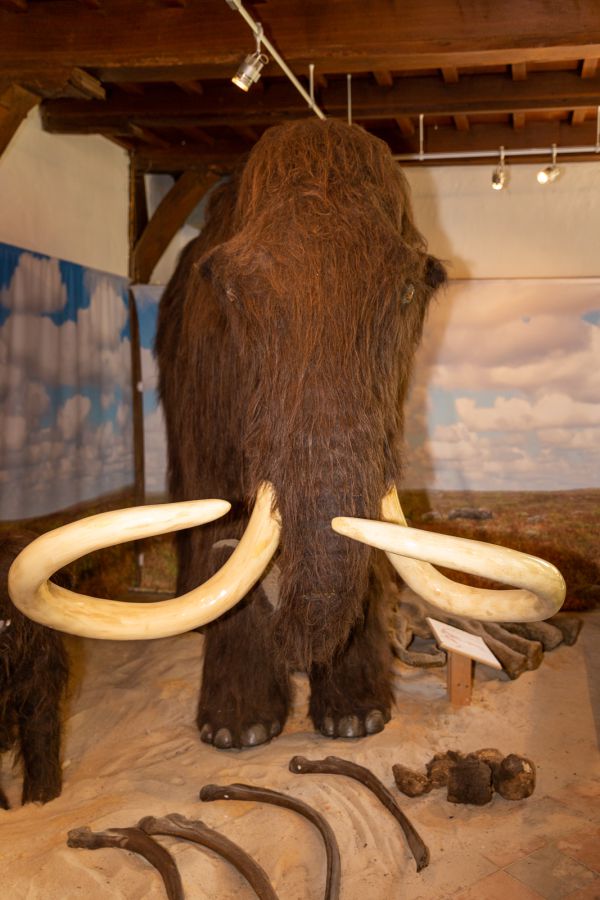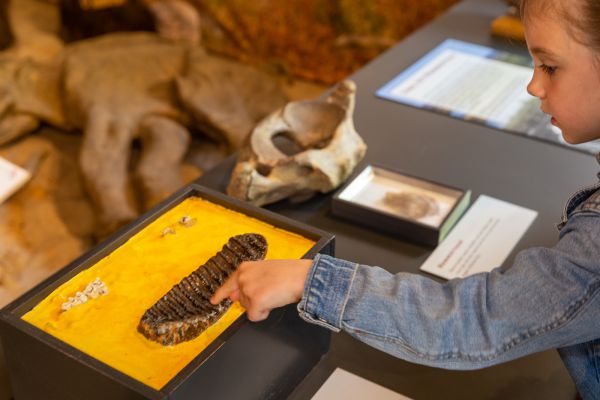At the OERmuseum, the Journey through Time starts at the last Ice Age with a lifelike mammoth and her calf. A nod to the distant past when the woolly mammoth lived in the area, according to bone remains that have been found. In 1987, mammoth bones were unearthed in a sand excavation in Nijensleek (10 kilometres west of Diever). These mammoth bones are about 47,000 years old, from a period between the penultimate and the last ice age.

In addition to mammoth remains, they also found the bones of the steppe bison, red deer, woolly rhinoceros, cave lion and sabre-toothed tiger. Experts have determined that the bones that were recovered came from five different mammoths. But 80% of the bones are from one single mammoth, including a rib that is over a metre long. This rib is on display at our archaeological museum in Diever. Distinctive carvings, possibly made by hunters, can be seen on the rib.
In the days of the mammoths, the Netherlands had a very cold and dry climate. The woolly mammoth had adapted well to this cold climate: small ears, thick fur with long hairs, thick skin with a hypodermal layer of fat (sometimes up to 9 cm thick) and a short tail. The mammoth had four molars, two on top and two at the bottom. As a result of eating grass and moss that contained a lot of sand, the mammoth’s molars wore down quickly. To be able to keep eating properly, the mammoth had to regularly change its molars, up to six times in its lifetime. After the last tooth change, the molars would eventually wear down until they could no longer grind their food properly, and the mammoth would often starve to death. At the OERmuseum, you can see and feel the mammoth’s molars.

As the climate started to warm up, the mammoth retreated further and further towards northern Siberia. Through the actions of prehistoric man, but especially because of a lack of suitable food due to climate change, the mammoth became extinct four thousand years ago.
The OERmuseum is open from the Easter weekend to the Autumn holidays. And in the Christmas (except for the 25th, 26th and 31st of December and the 1st of January) and Spring holidays, from 13:30 to 17:00 hours Tuesdays to Sundays.
ADDRESS & CONTACT
Brink 7, 7981 BZ Diever
General information:
mail@oermuseum.nl
Business contacts:
Bart Friso +31(0)6-2680 2024
beheer@oermuseum.nl